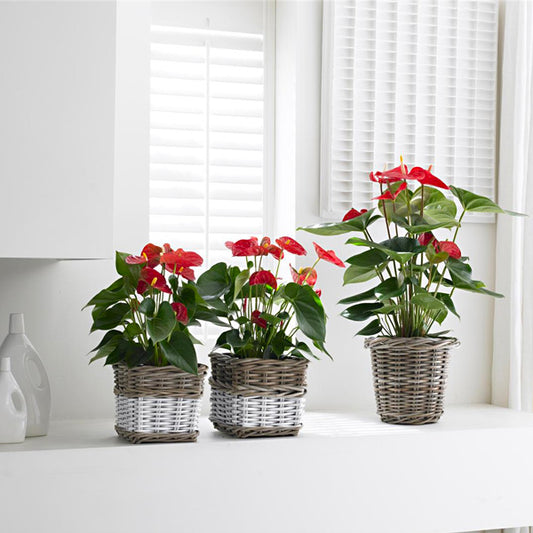Oncidiums are a delight to grow especially for those who have limited space. They have flowers that come predominantly in the yellow-brown range but of late with a lot of intergenic coming into the market, it is easy to acquire almost any colour you can think of. If grown under ideal conditions, they can bloom several times a year and can also bloom with multiple spikes off a single pseudobulb. Tolumnias or Equitant oncidiums are quite different in that they have succulent leaves and therefore their cultural requirements are different too.
Light : Oncidiums are broad-leaved indicating that they are well adapted to collecting light. Most of them are also thin-leaved indicating that they cannot tolerate direct sunlight. It is best to keep them under 50% shade nets on stands/ raised benches well away from the ground. Tolumnias, on the other hand, have succulent leaves that are long and narrow. They can, therefore, tolerate higher levels of sunlight and a few hours of direct sunlight will do them no harm as long as the humidity is high.
Water : Oncidiums have flattened pseudobulbs that can store both food and water. They can be watered depending on the planting medium, and the climatic conditions. water oncidiums often in hot & humid climates and less often in colder regions. Equitant oncidiums, on the other hand, are succulent in nature and therefore need to be watered just enough to keep their leaves from shriveling. Plants that are mounted should be watered more often than those in pots. Similarly, if there is a lot of air movement, they will need to be watered more often. Always water once a day (depending on the size of the pot) thoroughly rather than multiple times sparingly.
Temperature : Oncidiums are found extending from Florida in the North across Mexico, Central America, and the Caribbean into South America. This region mostly enjoys a tropical climate and therefore they are ideally suited to a day temperature between 24-30 degrees Celsius with a night temperature between 13-22 degrees Celsius. They can tolerate temperatures as low as 10 degrees and as high as 38 degrees Celsius for short periods beyond which damage can occur.
Humidity : Being epiphytic orchids, they enjoy a lot of humidity, especially during their growth period. In places where humidity is low, a humidity tray can be placed beneath the pots or if you grow them in a greenhouse, a misting setup would be ideal. Ensure that the humidity tray never goes dry.
Potting & Fertilizer : When selecting pots, choose pots that have just about 1-2 inches of free space around the base of the plant. Pots that are any bigger can cause excess moisture to stay in the pot which can, in turn, lead to root rot. Oncidiums do extremely well in Kiwi Pine Bark, Ideally, the media used should be free draining and about 0.5-1 inch in size. In high humidity regions, oncidiums do well if mounted. Tolumnia because of their succulent nature does well if mounted as they detest being wet for extended periods. Adult plants can be fertilized using Speciality Bio 20 or Basfoliar 19-19-19 SP fertilizer and once a month using Basfoliar 13-40-13 fertilizer. Remember to give your plants sufficient light when you use a high nitrogen fertilizer to prevent rot.

